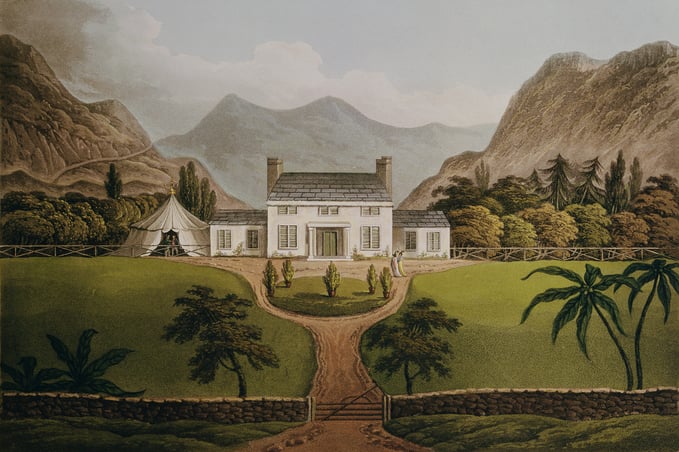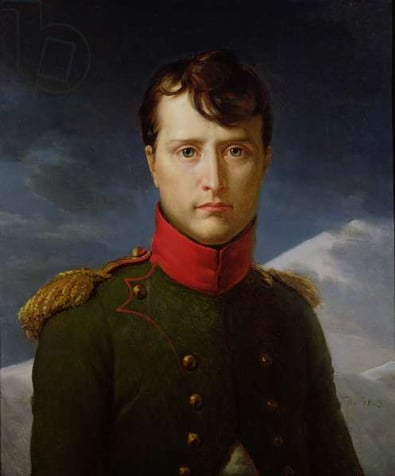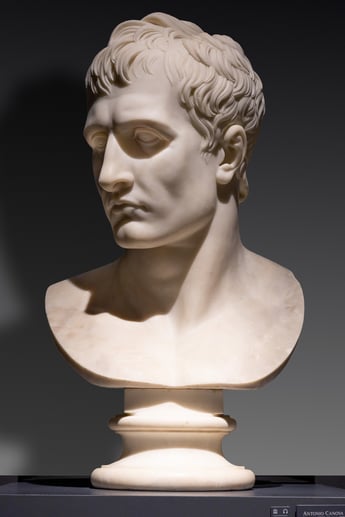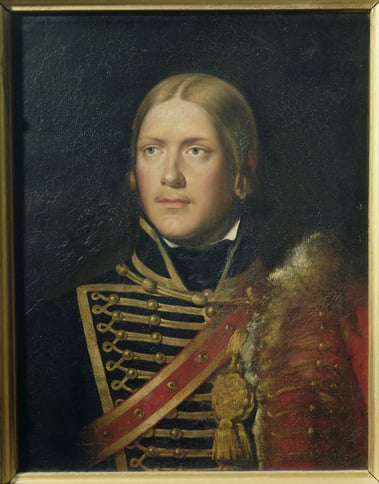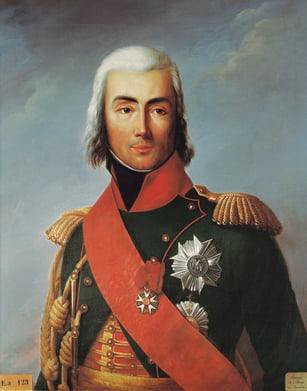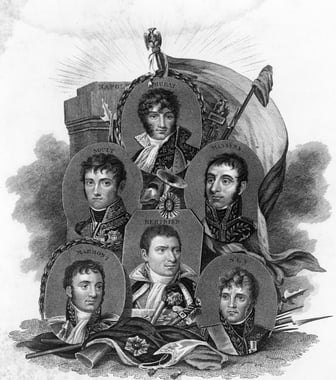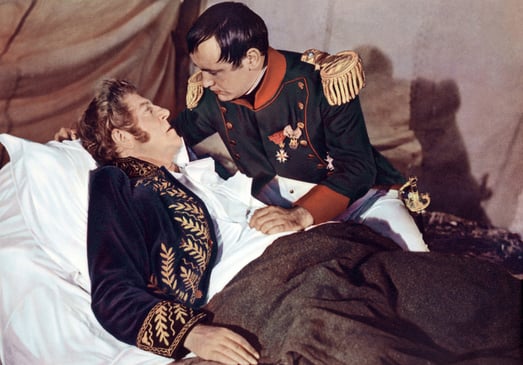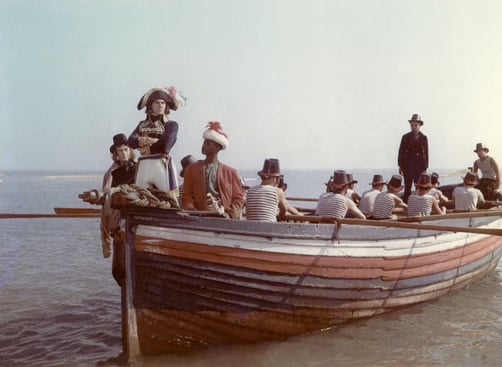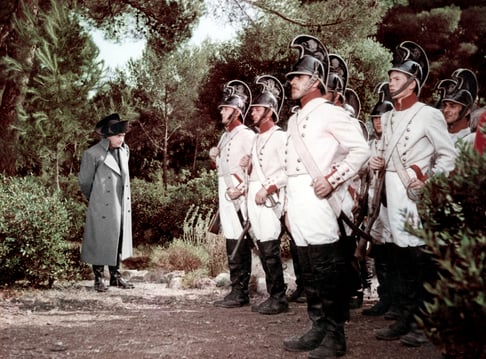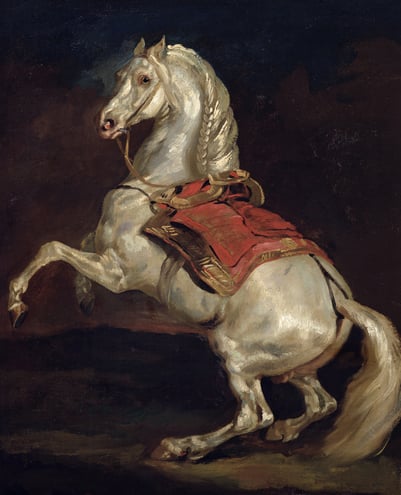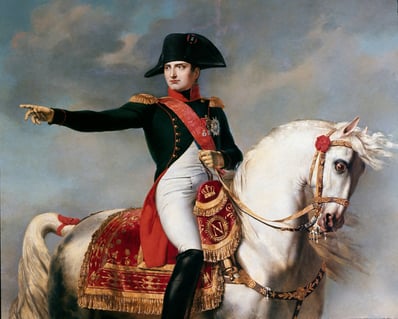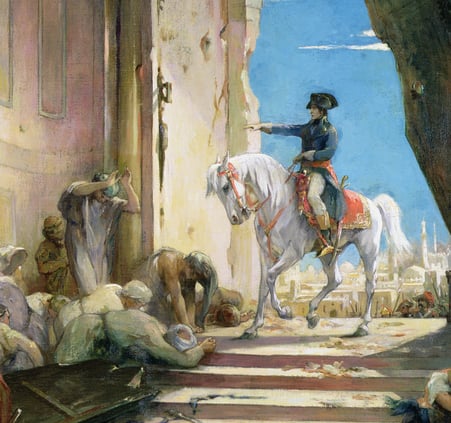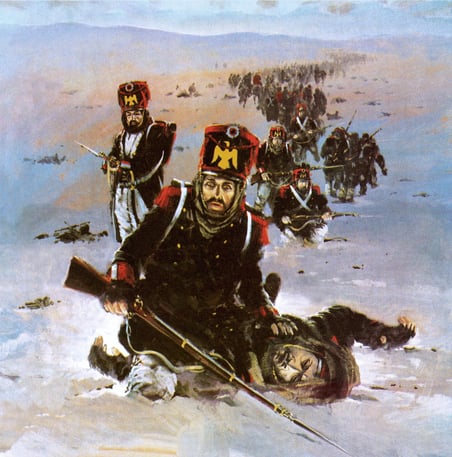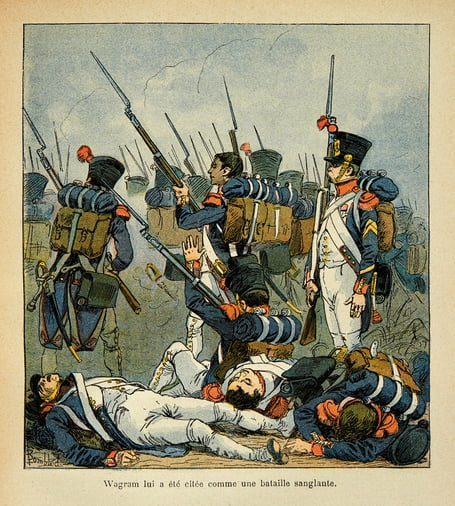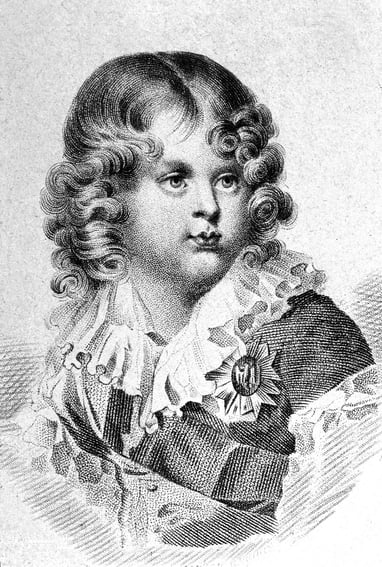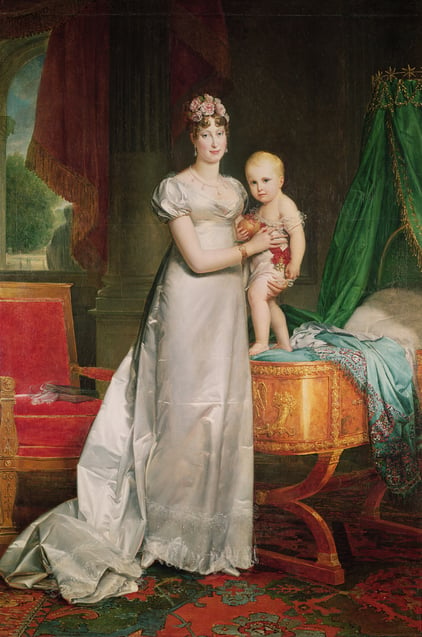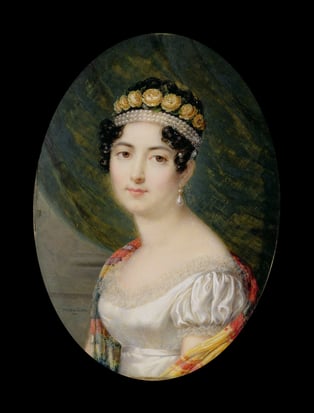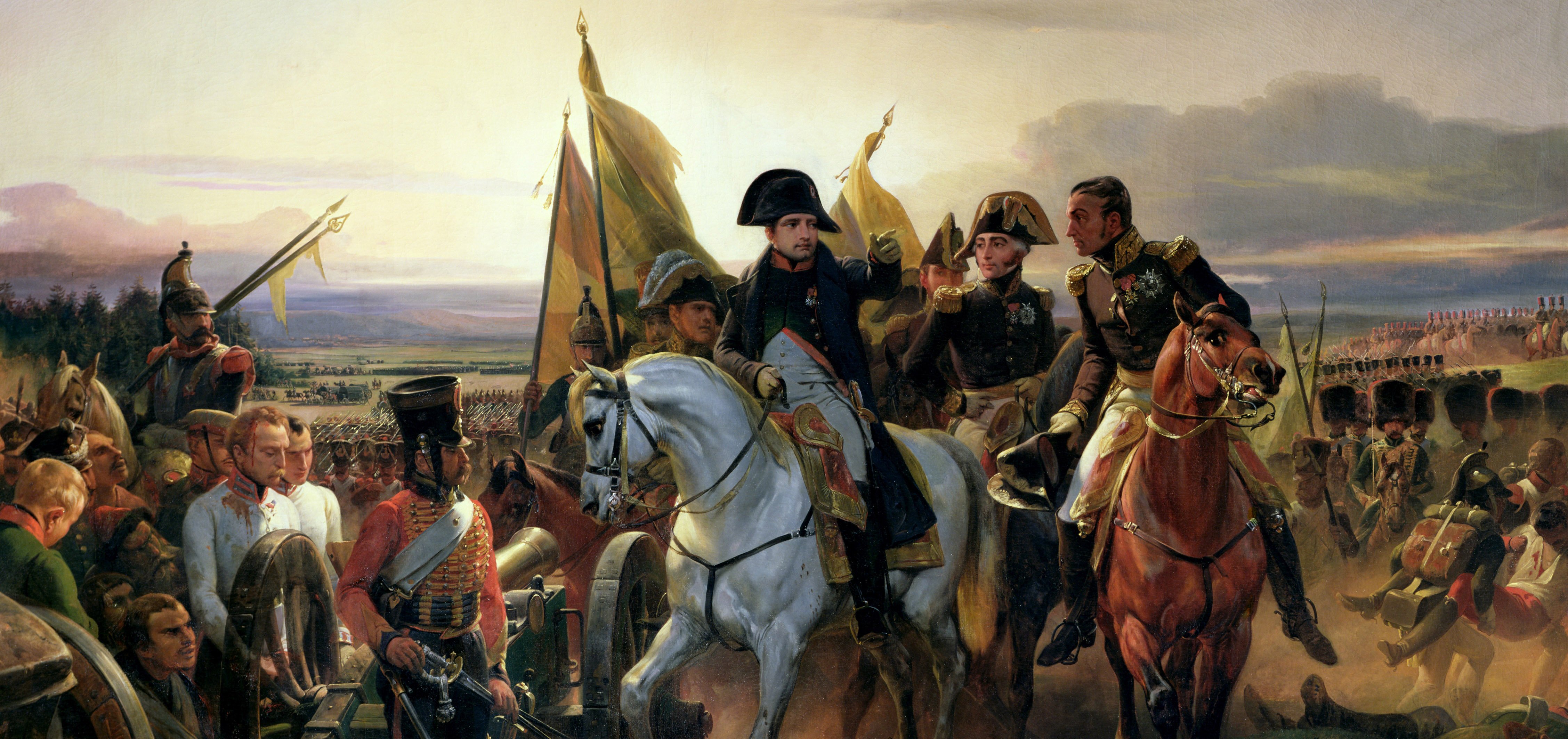
Napoléon Bonaparte
‘Country, authority, society, these are what Napoleon represents’ - John Denton Carter, Interpretation of the Career of Napoleon Bonaparte
Napoleon Bonaparte was born in the Mediterranean Corsica Island to a family of Italian descent and modest nobility. He was firstly appointed as a consul to France and a few years later became the first French emperor during 1804-1814, after he had won the battle of the French Revolution (1789-1799). Bonaparte’s success and power is rooted to his reign over France but he also conquered large extensive land of Continental Europe in the 19th century. In this list, we’ll look at why we need to remember Bonaparte as a successful military expert who was able to swiftly defeat his enemies and establish bigger colonies. We will also remember his success of implementing the new law ‘Napoleonic code’, his son Napoleon II, his wives Josephine and Marie Louise and his allies and battle Chelvary. Bonaparte’s political aim was to establish control and jurisdiction over France. His military prosperity shall be remembered as we soon reach the anniversary of his death, 5th May.
Napoléon Bonaparte The Battle of Waterloo, The Battle of Friedland
On Sunday, 18th June, 1815, The Battle of Waterloo commenced in Belgium. Napoleon’s Army of 72,000 soldiers stood against the 68,000 soldiers of the British army. Arthur Wellesley led the British Army with a grand number of British, Dutch and German troops. The battlefield is located in Braine-l’Alleud and Lasne, Belgian regions, south of Brussels. Napoléon’s soldiers were well prepared for an attack against the British, but the Prussians' arrival came unexpectedly and mass casualties were recorded. 25,000 French troops were wounded and killed, compared to a devastating loss of 23,000 from the opposition. Napoléon’s French army was finally defeated by the Prussian’s and British, with this event marking the end of Napoléon Bonaparte’s military career and reign as the French Emperor.
The Battle of Friedland saw victory for the Napoléon army who fought against the Russian army led by Count von Bennigsen. At approximately, 5 o’clock in the afternoon, Napoleon employed 65,000 men resulting in the Russian Army being pushed back into the small village of Friedland. Thousands of soldiers of the Russian Army were killed and captured, many are said to have drowned as they escaped the battlefield by retreating over the Lyna River. The battlefield is located near the town of Pradinsk, Russia.
Napoléon Bonaparte’s exile to the Island of Sainte-Helene
Bonaparte had launched an invasion against the Russians which ended up with his troops retreating from Moscow. Large parts of Europe began to unify against Bonaparte, ultimately leading him to withdrew from his duties, leading to his first exile to the island of Sainte-Hélène. Sainte-Hélène is a British overseas territory in the South Atlantic Ocean. During the year of 1815, Bonaparte arrived back in Paris, reclaiming supporters and his Emperor title. However six years later Bonaparte was exiled for a second time, a result of his defeat at the Battle of Waterloo. Bonaparte, known as the honorary French consul of the region, was forced to sign the act of abdication by the united forces of England, Prussia, Russia, Austria.
This portrait shows a pale, weak Napoléon, clutching on to the Cross of the Legion of Honour, which symbolises the highest French order of merit, both civil and military. Napoleon died on the Island on May 5, 1821 at the age of 51, the cause is said to have most likely been stomach cancer but some theories exist that suggest he was poisoned. Discover more images about Napoleon Bonaparte's time in Sainte-Hèléne.
Whilst in Saint Helene, it was Napoleon’s role to oversee Longwood House, this was his last home and residence during exile from 1815-1821. This painting by John Hassell, shows large hills/mountains in the distance, with a forefront of expansive neat green grass and trees. The white house is surrounded by total serenity. The house first belonged to the East India Company following it being the residence for the Deputy Governor of the country. In the year 1815, the house was converted for Napoleon’s use.
Portraits of Napoleon Bonaparte : Oil Portrait & Carrara Marble Bust
Napoleon attended a prestigious school in Paris called the Ecole Militaire. The Ecole Militaire was founded by King Louis XV in 1750, after the war of the Austrian succession. His education was cut short at sixteen as he became an officer in the French army. Gerard Francois, French painter depicts Napoléon here as a young man, his gaze is assertive, direct and focused, characteristics of his that enabled success. The portrait was painted at a time when Napoleon would have been the first consul of France. As a French consul he reorganised education and a more authoritative, autocratic government albeit not announcing himself head of state yet. Napoleon’s personal motto: ‘motto liberte’, ordre public, translating to ‘liberty, public order’. Napoleon Bonaparte established a series of laws after his military conquers. One of these was Napoleonic code, also known as ‘reformed French Law’, it established key motives to give authority to male citizens and allow them to have equal rights under law, especially over their families. Men were also granted the right to religious approval. Under the code, colonial slavery was reintroduced.
Bonaparte has been described by historians as full of life, constantly seeking action. He is depicted in Antonio Canova’s pure marble bust sculpture as stern and undeviating. Canova was an Italian, Neoclassical sculptor, most famous for his marble sculptures. This sculpture of Bonaparte conforms to neoclassical typical characteristics of symmetry and life-sized scale. The marble sculptures typically depict mythological figures to heroes of the past. Bonaparte’s hair appears stylised with smooth skin. Images ensure Napoleon Bonaparte’s identity as a significant figure of our historical, political past.
Discover a collection of the most impressive portraits of Napoleon Bonaparte
Napoleon’s Marshalls & Generals
Many Marshalls & Generals worked aside Napoléon Bonaparte and were an important part in establishing control over occupied territories. Throughout his reign, Napoleon appointed a total of twenty six marshals. Michel Ney, Duke of Elchingen was one of Napoleon’s most well known marshals, he fought in the French Revolutionary Wars during the period of 1792 - 1802. The French Revolutionary Wars began after the French Legislative Assembly declared war on Austria. The wars overthrew a substantial number of monarchies. Napoleon had great control over his armies but would sort them into separate subdivisions which were individually controlled by their own general or field marshal.
Marshall Charles Jean Bernadotte (1763-1844) was the King of Norway and Sweden, he was appointed a Marshal, an officer of the highest rank. Bernadotte shifted his alliances away from the Napoleonic troops to form relationships with Russia, Great Britain and Prussia. This portrait by Johann Jacob de Lose is rich in wealth, portraying the patterns of medals and gold embroidered patterned clothing.
Cultural depictions of Napoleon in Film Stills
Napoléon Bonaparte is recognized in action through his character depictions in twentieth century films. All three images here are snapshots from a series of films directed by French stage actor and director Alexandare - Pierre Georges “Sacha” Guitry. Guitry was the son of leading French actor, Lucien Guitry, prominent on the French stage at the Renaissance theatre. Guitry directed the film ‘Napoleon’ in 1955, the French film depicts some of the most significant life events of Napoleon, including the Napoleonic battles of Waterloo and Austerlitz. The life of Napoleon is covered from his birth and upbringing in Corsica to his exile and death in Saint Helene. Napoleon’s character in his younger years is played by actor Daniel Gelin, a leading figure in the French cinema of the 1950s. These scenes depict Napoleon upon his death bed, directing his troops and travelling by boat. Napoleon is represented as a wealthy man dressed for superiority hence his position as leader in command. Young depictions of Napoleon show a heroic visionary, full of energy, brave in accomplishing his successes. Old depictions of Napoleon however appear differently, representing him sometimes comically or as his later stereotypical character, stubby and bossy.
Le cheval, Equestrian Napoleon:
During the years of the Napoleonic Wars, horses were widely used in conflict, patrol, military observation. The horses strength was utilised during these wars, they provided a ‘shock charge’ to the opposition. A war horse was of a moderate traditional size with a charge's maximum speed at 20 mph.
Marengo, is in fact the name of Napoleon’s most famous war horse, named after the Battle of Marengo fought on 14 June 1800. Following the Battle of Abukir in 1799, Marengo was imported to France from Egypt, he remained at the side of Napoleon for fifteen years. The horse is an Arab Stallion with a glowing grey coat, short for a warhorse with a height of 1.4metres. Marengo carried Napoleon for the last time at the Battle of Waterloo. Marengo’s skeleton is on display at the National Army Museum in London, however it is missing two front hooves.
Jean - Louis Andre Theodore Gericault was one of the pioneers of the Romantic Movement. Characteristics of Romantic Art are present within this image, including that of spirituality, mystery and the imagination. The image shows a beautiful gleaming horse highlighting the importance and strength of these animals. The eyes of the horse appear slightly red, perhaps representing the barbaric nature of the Napoleonic era.
Discover more images of Napoleon and his horses
Napoléon Bonaparte’s Soldiers
La Grande Armee was the imperial army commanded by Napoleon Bonaparte during the Napoleonic wars, most of the men within the army were from the poorer classes however soldiers of the highest rank formed a group called ‘The Old Guard’. Soldiers wishing to join the Old Guard had to have at least 10 years prior experience in service. Officers within this category were far more likely to have been promoted up from the ranks of heroism. The Old Guard soldiers were dressed in the sharpest, most lavish of uniforms, such as long tailed jackets and waistcoats. Poorer soldiers learnt by experience and did not necessarily have any sort of formal training beforehand. Bonaparte and his loyal group of soldiers were well known for conquering France. They were also successful in many military ambitions, notably a succession of wars. Bonaparte fought in seventy of these, only losing eight. Bonaparte’s success is also contributed through his engagement with his troops, trust was formed by both parties. There were three elements to the Napoleonic Army including the artillery, the infantry and the cavalry, known as the three combat arms. The most famous soldiers of Napoleon's army were called ‘The Imperial Guard’. Napoleon’s army was the most feared across Europe.
See images of Napoleon's soldiers and Citizens
Napoléon II, French Empress Marie & Empress Josephine
Napoléon François Charles Joseph Bonaparte (20 March 1811 - 22 July 1832) was the only son of Napoleon I, born in Paris. Since birth he was given the titles of Prince Emperor of France and King of Rome. Napoleon II became the Emperor of France for only sixteen days. He was also classified as a titular ruler so he did not have any strong power over leadership. Napoleon’s official army career began at the age of twelve, as he became a cadet in the Austrian army. This caught the attention of European leaders including many French politicians and Austrian Chancellor Klemons von Metternich as they saw it as a threat to the throne. Napoleon II lived in Austria, he also learnt German, Italian and mathematics. He lived a short life, dying of tuberculosis at the very young age of twenty one.
Josephine de Beauharnais was the first wife of Napoleon I and the Empress of the French. She could not provide Napoleon with a son so he sought to find another suitable wife. Josephine was a leading collector of sculpture and art of her time. She worked with interior decorators to establish a distinctive Consular and Empire style at the Château de Malmaison. Josephine was truly loved and adored by Napoleon and was the recipient of numerous love letters.
French Empress Marie was the second wife of Napoleon I. She was an Austrian archduchess who reigned as Duchess of Parma until her death in 1814. Marie Louise married Napoleon on 11 March 1810 at the Augustinian Church in Vienna. Marie Louise is the mother of Napoleon II. Napoleon I had an ambition to have a son as a successor so their marriage largely surrounds this as well as being largely shaped by European politics. Their marriage bound Austria and France together hoping for peace between the two to last, however soon both countries took part in military conflict again.
Napoleon had also had a relationship with Countess Maria Walewska from Warsaw, Poland of which during their relationship a son was born out of wedlock.
See more images about Napoleon Bonaparte's life
Sources:
https://en.wikipedia.org/wiki/Battle_of_Friedland
https://en.wikipedia.org/wiki/Napol%C3%A9on_(1955_film)
https://en.wikipedia.org/wiki/Daniel_G%C3%A9lin
https://en.wikipedia.org/wiki/Sacha_Guitry
https://www.mentalfloss.com/article/67270/15-epic-facts-about-napoleon-bonaparte
https://en.wikipedia.org/wiki/Horses_in_the_Napoleonic_Wars
https://www.thefamouspeople.com/profiles/napoleon-ii-8571.php
https://www.newworldencyclopedia.org/entry/Napoleon_Bonaparte
https://www.britannica.com/biography/Josephine
https://www.sparknotes.com/biography/napoleon/timeline/
https://courses.lumenlearning.com/suny-hccc-worldhistory2/chapter/napoleons-marriage-to-marie-louise/



